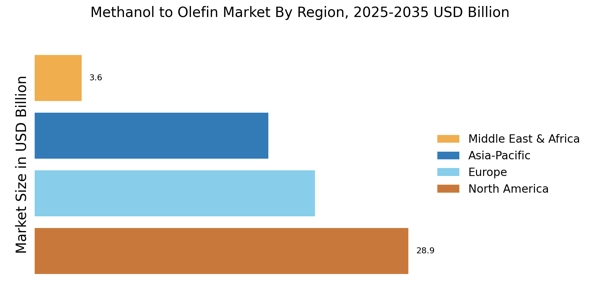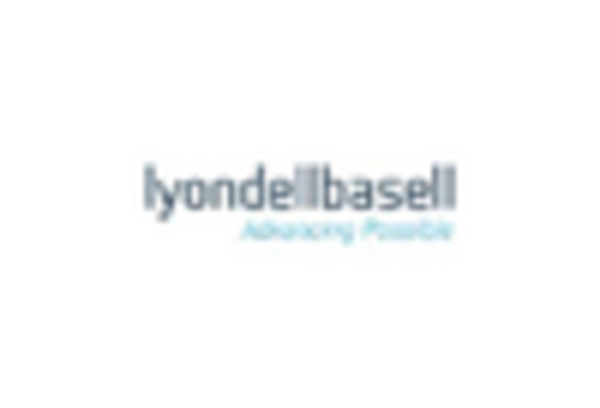Rising Demand for Petrochemicals
The Methanol to Olefin Market is experiencing a notable surge in demand for petrochemicals, driven by the increasing consumption of plastics and synthetic fibers. As industries such as automotive, construction, and packaging expand, the need for olefins, which are derived from methanol, is projected to grow. In 2025, the demand for ethylene and propylene, key olefins produced from methanol, is expected to reach unprecedented levels, potentially exceeding 200 million tons. This trend indicates a robust market for methanol conversion technologies, as manufacturers seek to optimize production processes to meet the escalating needs of various sectors.
Technological Innovations in Catalysis
Technological advancements in catalysis are playing a pivotal role in the Methanol to Olefin Market. Innovations in catalyst design and development are enhancing the efficiency and selectivity of methanol conversion processes. Recent breakthroughs suggest that new catalysts can significantly reduce energy consumption and increase yield rates, making the production of olefins more sustainable. As companies adopt these advanced technologies, the overall competitiveness of the methanol-to-olefin process is likely to improve, potentially leading to a market expansion. The ongoing research in this area indicates a promising future for the industry.
Growing Interest in Renewable Feedstocks
The Methanol to Olefin Market is witnessing a growing interest in renewable feedstocks, which could reshape the landscape of olefin production. As sustainability becomes a priority, the exploration of biomass and waste-derived methanol is gaining traction. This shift towards renewable sources not only addresses environmental concerns but also enhances energy security. The potential for integrating renewable methanol into existing production frameworks may lead to a diversification of feedstock options for olefin production. Consequently, this trend could stimulate growth in the methanol-to-olefin market, as companies seek to align with evolving consumer preferences and regulatory demands.
Cost-Effectiveness of Methanol Production
The Methanol to Olefin Market benefits from the cost-effectiveness of methanol production, which is often derived from natural gas or coal. As energy prices fluctuate, methanol remains a competitive feedstock for olefin production. The conversion process from methanol to olefins is generally more economical compared to traditional naphtha cracking methods. This economic advantage is likely to attract investments in methanol-to-olefin technologies, as companies aim to enhance their production efficiency while minimizing costs. Furthermore, the potential for utilizing renewable methanol sources could further bolster the industry's growth, aligning with sustainability goals.
Regulatory Support for Cleaner Technologies
The Methanol to Olefin Market is likely to benefit from increasing regulatory support aimed at promoting cleaner technologies. Governments are implementing policies that encourage the adoption of low-emission processes, which could favor methanol-based production methods. As environmental regulations tighten, industries are compelled to transition towards more sustainable practices. This shift may lead to a greater emphasis on methanol-to-olefin technologies, as they offer a pathway to reduce carbon footprints. The alignment of regulatory frameworks with industry goals could catalyze investments and innovations in the methanol sector.


















Leave a Comment